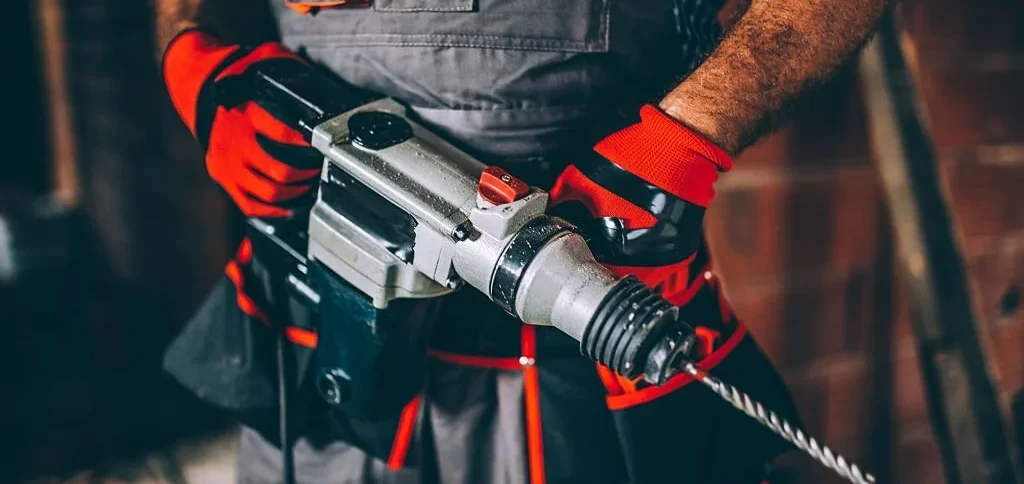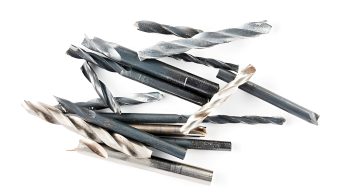Are you working on a DIY project that calls for learning how to drill into brick without cracking it? Advice for Making Clean, Accurate Holes Don’t let the difficulty deter you; with the proper drill press setup, equipment, and methods, you can easily make holes in brick.
We’ll discuss how to use your drill press to make clean cuts into brick walls or fireplaces without causing any damage. We’ll go over best practices for utilizing a powerful drill and guide you through each step of getting started.
Whether you are a hobbyist with some DIY projects in mind or an experienced craftsman, drilling into brick can be a tricky prospect. But don’t worry – with the right techniques and tools, this challenging endeavor doesn’t have to strike fear into your heart!
We’ll break down the steps needed to safely and effectively drill through brick walls so that your desired results will turn out picture-perfect every time. Keep reading to get all of the information you need on how to make your next project go as smoothly as possible!
The Process of Drilling Into Brick
Because when you’d like to drill like an expert, a mistake can cause cracking, rough edges, or maybe no holes. To drill into bricks you will require. Check drilling locations before drilling if the pipe is uncovered behind the brick.
The drilling process of wires under the power outlet should be avoided wherever possible. If you’re not certain where you’re looking for live wire or pipeline, you may need to use pipe or shunt wire detection.
Drilling Into Brick Without Cracking It – 9 Easy Steps
Since bricks are more commonly exposed, it has become important to know how to dig through them and avoid causing serious injury. Drilling the brick without damage requires you not to have the ability to work on a handy job.

If you’ve got the right drill, masonry drilling tools as well and the necessary skill set, this job could be remarkably easy. It should be important to learn some important things to start with. You can not put your hanging mirror or planters beneath your windows simply because they are bricks.
1. Get a Drill, Drill Bit, Screw & Screwdriver
The most recommended drill to drill into bricks is the TackLife Cordless Hammer Drill. It is very efficient and speedy for drilling bricks.
Although you can use a regular drill, hammer drills are a good option when you want to drill multiple bigger holes, especially on very strong bricks. For the digging of brick, you will require a masonry drill bit.
Bosch drill bits set comes in many shapes and is specially designed for the use of bricks and tiles. This type of drill will allow you to drill hard materials.
Also Check: Best Drill Press For Metal
2. Decide Which is The Best Drill
The right drill is a good choice for a wall. The bigger the holes, the bigger the drilling needs. A battery drill machine will be suitable to drill 4 – 8mm holes. If my drill holes are at least 6mm I’ll use the 110v power hammer drill and SDS bits.
These bits are slightly heavier but are much more efficient to drill multiple holes on bricks. I use a rotary drill a lot of times but rarely in carpentry operations.
3. Use a Drill Stand
A drill stand is a device that holds a drill tool while it is in operation. The drilling device is anchored onto a shelf to keep it from tumbling. It aids in the creation of straight holes without turning. It provides extra support and comfort when using the drill for drilling on walls.
4. Mark Your Desired Hole
If you’re going to drill your own hole it would be best to make a check for any wire connections. Also, don’t drill over an electric outlet! When you have no knowledge of where live wires or pipes exist, you can find a pipe & wire detection device on Amazon.
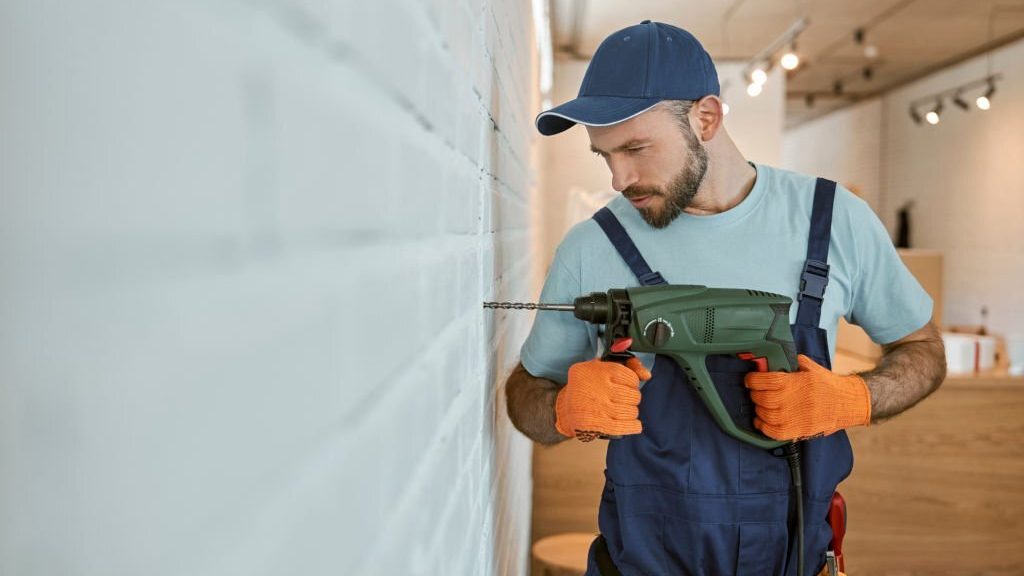
When it comes to a choice about which hole is needed, another factor is whether the hole is directly cut into the wall or the mortar.
5. Select Depth and Mark Your Drill
The easiest way to determine the depth is to look at the manual on your installation device. Usually, the holes are smaller than their length. If there’s no drill or depth-block attachment to the drill, you may have to cover it in mask tape to give hints on the time to stop drilling
6. Level the Drill With the Hole
It’s now time for a fun drill! Follow this step carefully to avoid the chance that your brick will crack. Position your drill perfectly horizontally and level and place the end on your marker. This section will explain which drill you need to use first.
7. Drill Pilot Holes
Pilot holes are holes created using small bits and nail sizes. It serves as a guide to bigger drill bits. Pilot holes help in the release of soft materials like brick or wood. If you use bigger drills they go deeper. There will be less pressure on the larger piece.
Also Read: How To Use a Drill Press?
8. Size of the Hole
Make sure there is enough brick material around the anchor for stability as well. The more material the larger the holes are, the more it compromises the integrity of the brick. This can result in cracks and spalling.
9. Type of Anchor Used
Concrete screw or brick anchors are available with self-tapping brick anchors, plastic wall anchors, and expansion-type anchors for mounting objects. The length of the anchor is determined by the weight of the mounted object and support. Some anchors may damage fragile bricks such as expansion anchors.
Alright, So You Cracked the Brick? Let’s Fix It
Sometimes something unexpected happens and the walls crack and the drill bits are cut into holes, or they break. In these circumstances, the drilling hole must have been removed to correct the damage.

For filling gaps you may have putty and concrete sealers used. You should follow the instructions to mix according to the glue and sealer’s manufacturer’s name.
Clean up dirt and debris from bricks and mortar. Wet the bricks and keep waiting till it dries out. Then apply squeaky paste to the hole in the tin. After it has dried, remove any residual moisture with a brush. There are various tools that can easily remove a piece before fixing holes.
Follow These Tips for Drilling Neat Holes
The reason for drilling brick walls is quite clear. Often because of a requirement to screw something to a wall. You may need more drilling on the walls to pass through the walls to make the connection.
There are many various types of wall plugs/anchors depending upon the strength of the piece screwed onto the wall. Most of these will include an indication of strength to help determine which is stronger. )
Make sure there are no pipes, cables, or anything else you might hit before drilling a hole in a brick wall
Do nothing below the cable. Make sure no pipes are in the house too. Also, Learn How to Drill into Marble?
Follow the Proper Safety Procedures
When working with electric machinery, safety is advisable. Practicing proper drilling safety measures will protect you and your crew while forging accurate holes. For protection from injury, wear goggles, protective earmuffs gloves, or breathable respirators. These safety items are also important.
The presence of silica in the buildings can be harmful. Silica particles of 5 mm or 10 mm do not escape from your lungs after being inhaled. During time build-up may cause lung inflammation. Always wear protective clothing. Regular inspection and repair are essentials for hammer drills.
1. Decide on the Location
If you are planning to drill bricks or cement, you have to choose where it is. Using a drill to make brick choose an area that minimizes cracks for an aesthetically pleasing mount. You should be able to pinpoint a spot that remains steady and not fragile. If the drill is drilled improperly it may damage the wall.
Drilling for the bricks follows the procedure. Drills are the same as working in masonry. The same steps can apply to a first stone drilled procedure. Having drilled holes can prevent splits in the surface of your home.
2. Wear Protective Gear
Protective gear is designed to protect against harmful tools and debris that might cause damage. Protection devices could include breathing machines and gloves for handling dust which can irritate lungs.
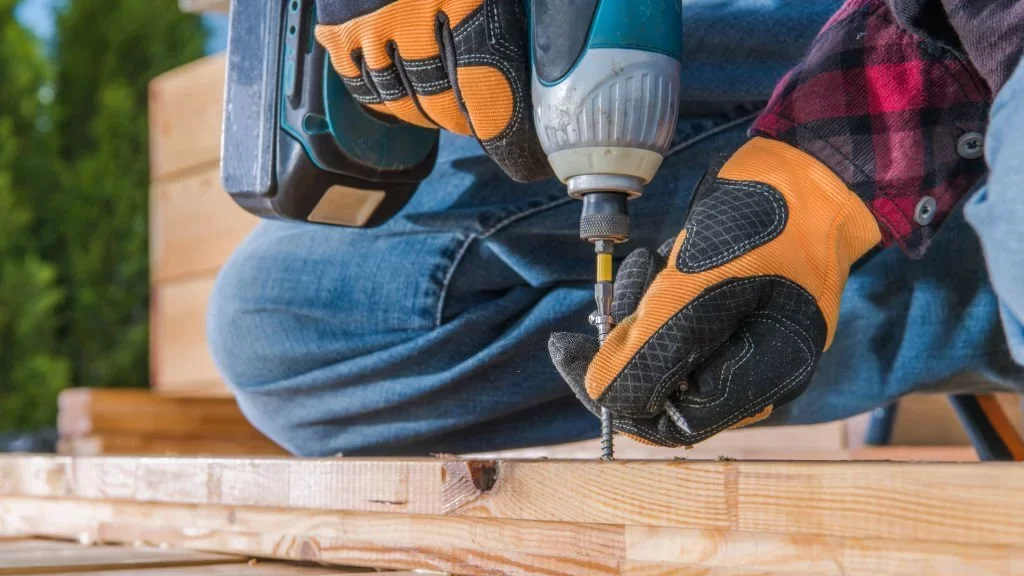
You may wear an earmuff and safety sunglasses to protect your eyes from flying debris and your ear from loud noises.
3. Choose the Right Drill Bit
Masonry (Brickwork) drilling is very different from masonry and wood drills. There are a lot more than one type of wood drill that is not suitable for masonry. Masonry pieces are excellent tools to drill concrete, bricks, and mortar.
Masonry drill bits are available with a normal round shape like in the photo at the left of the screen.
4. Choose the Right Size Drill Bit
The masonry material is very tough and dense for this. There are also exceptions we can get into later). In almost all circumstances to screw something to a concrete wall you have to have a raw plug and hence you have to pick the right drill bit for a size raw plug.
What Do You Wear When You Drill Into Brick or Mortar?
In the case of drilling into bricks, protective clothing is required because of the amount created from dirt. In addition, you’ll need a face mask or goggles. According to the project scope, you will need gloves and general gear.
Take your bricks to make sure they are solid to drill into. As long as your toolkit is used properly, your drills will go into it without a problem. Find the most efficient tools on this page.
Can I Drill Into Brick With a Regular Drill?
A regular drill will be capable of drilling holes in brick without hammers. This method is slower but requires masonry drill bits. Masonic pieces have arrow-like forms and larger points than the rest of the pieces and have been designed for cutting through materials such as stone bricks.
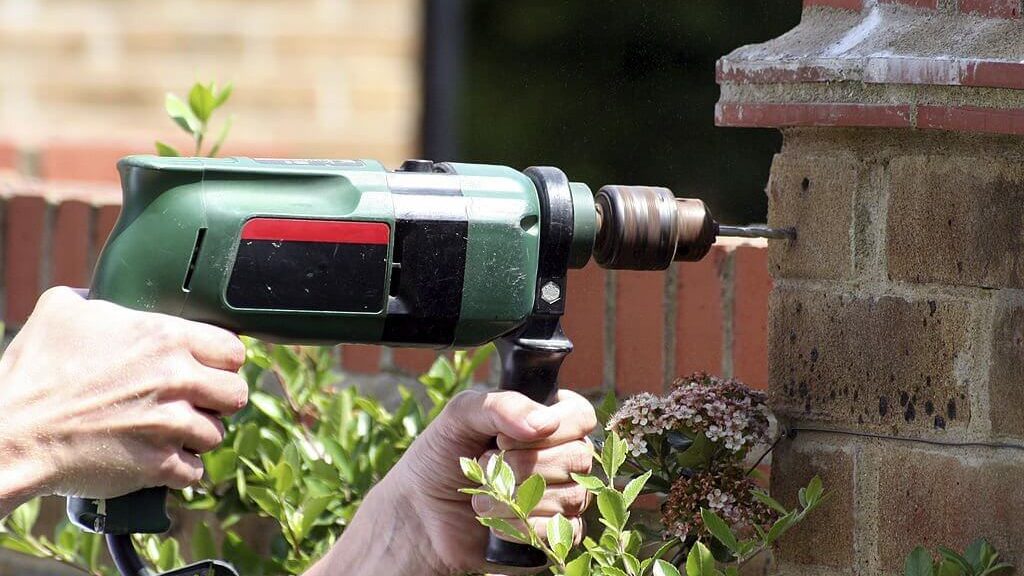
Masonry bits have tougher bending edges, which give them a greater ability to break up the masonry structure than standard pieces. Find a carbide masonry bit at your local hardware store. The substance has the toughness to endure the grounding of bricks and concrete.
How to Drill a Brick Wall for Larger Holes and Fixings?
When the wall anchors are heavy, these anchors work similarly and can take much heavier loads. Examples include mounting television screens on walls or steps. Normally I’ll use Fischer fixings in such applications.
These products can be found in several widths to suit different uses & they can withstand severe stress. For larger holes, I usually use my SDS rotary hammer drill with an SDS bit specifically designed for these types of work.
What Type of Drill is Best For Brick?
Hammer drilling equipment is the only tool for drilling holes for building and construction. The same applies particularly to the drilling of larger holes in brick. During construction on concrete hammer drilling is an invaluable tool.
Aside from regular drilling, it can drill holes in bricks using the use of a hammer-type motion.
A hammer drill is often required for the use of brick parts, but a standard drill is also possible. In certain cases, hammer action may shatter or split the brick when a particular material is particularly hardened. So a careful examination is necessary before drilling.
Drilling Tip – Don’t Drill the Hole Too Deep!
Often drills feature a depth stop attachment to stop drills when they are below an acceptable depth. If you don’t want to drill a hole into the brick wall you could use the masking tape to seal it with a screw.

Put the sleeves on the nut and tape around 5-10 cm long. It is necessary to stop drilling when the tape is removed in order not to accidentally get the screw into the hole. In a hole too deep it can require two Raw Plugs to get into a hole.
Drill Into Brick Without Cracking FAQs
Can I Drill into the Brick with a Regular Drill?
The best drills for masonry are concrete diamond screws. Both are crafted for gracing and piercing materials together. The regular drill will need more force when pulling the surface and the drill parts are often more vulnerable under this pressure.
Why is Drilling into Brick so Hard?
How to drill masonry. Drilling brick is different from drilling wood. The reason is the fact that the concrete is tougher.
Should I Drill Through Brick or Mortar?
As a general rule, unless the weight is low, never drill in bricks. Mortar does not have enough weight and deteriorates quicker than bricks do.
What is the Best Drill Bit for a Brick?
It is easier to penetrate hard surfaces with masonry parts using special carbide or diamond tips. Various types of drill work with standard drill bits for masonry work, although the regular drill is probably not a good choice for particularly hard work.
Conclusion
Congratulations! Now that you know How to drill into brick without cracking it, you are prepared. Always drill a pilot hole first, practice on an extra brick if possible, use water to cool the drill bit and lengthen its lifespan, and use serving clamps for stability.
Also, attaching a guide plate will help you achieve a straighter hole in the wall. With practice and patience, drilling into brick walls can be an enjoyable task.
Although arguably not as much fun as painting or using colored tiles to decorate the wall, working through some of the challenges presents great satisfaction once you see the results. If ever in doubt, remember there is usually a professional who can help – though it may cost you more money than doing it yourself.
